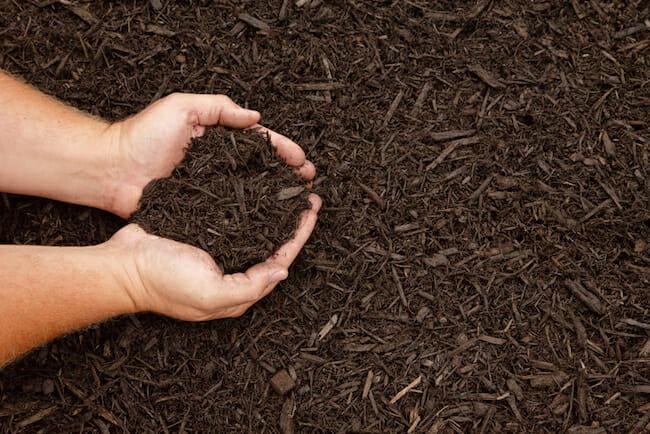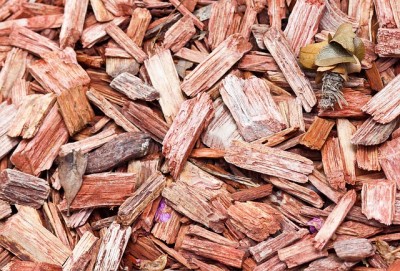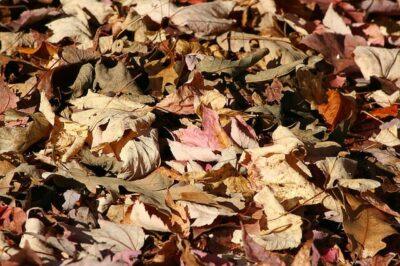The question came during a car ride to the annual co-op tree sale, when my farm apprentice asked one of our passengers, a seasoned self-described permaculturist, for a definition of what she did.
After a few halting starts describing site-planning and sustainability and organic and natural, she said, “Basically it just means I mulch a lot.”
We all laughed, but the truth is that mulch is a really big deal. So much so that I consider it to be every gardener’s secret weapon. It is simple, often inexpensive or even free, easy to use, and effective — yet many people are not aware of the wonders of mulch.
It may be easier to define mulch than permaculture, but it, too, is a practice which is wildly diverse and highly personalized. It can be made of virtually any material, used in multiple ways for myriad purposes, and infinitely customized.
What is mulch, exactly? An Internet search of the word yields plenty of opportunities to purchase it but not much in the way of actual definition. In two words, mulch is “ground cover.”
Why Mulch?
The reasons I use mulch are mostly about utility and efficiency. Covering the ground around my garden vegetables, perennials such as rhubarb and blueberries, and fruit trees accomplishes many desirable outcomes for me as a homesteader. It discourages weed growth, helps retain water, defines walking paths, improves soil health, and discourages my cat and other animals from eliminating and digging. It also makes it easier to mow and trim around vegetation.
The All-Natural Fertilizer That Can Double Your Garden Yield! [2]
Other reasons to use mulch are more focused on aesthetics. A manicured layer of ground cover around flower beds, bordering everything from household structures to fences to walls to ornamental trees and shrubs to pools, is generally considered attractive.
Other mulching uses include covering steep banks and other areas which can be challenging to mow and where erosion control is a factor.
There is a great deal of overlap among reasons for mulching. Although my reasons are primarily practical-minded, I enjoy the pleasing visual quality of the neat appearance. Likewise, I expect that homeowners whose objectives center upon visual appeal are glad for the added bonuses of weed control, reduced water usage and facilitating trim work.
What to Use?
Hang on to your hat — here comes the best part! You can use just about anything for mulch. Grass clippings, weeds, leaves, cardboard, newspaper, wood scraps, rubber, plastic, and more are all great for mulching (although rubber and plastic won’t decompose). Sourcing possibilities are also widely varied. You can get mulch from farm and garden retailers, landscapers, recycle facilities, or your own backyard. You can pay a lot of money or you can find many options for free.
When most people envision mulch, they think of coarsely ground-up bits of bark and other wood products, purchased by the cubic yard. It can be natural colored or dyed in shades of red or black.
I use a lot of other substances for mulch. I use three-foot-wide strips of used carpet as a semi-permanent border and weed barrier around the edge of my in-ground garden. They can be moved out of the way for rototilling and neatened up every season. The carpet kills the lawn grass beneath it, allowing me to easily expand the size of my garden every year, but is permeable enough to allow air and water through it. One of my favorite things about my carpet border is that it is soft enough to allow portable electric fencing to be installed over the top of it, keeping out animals by either electrifying the fence or using it as a simple physical barrier, and removed during the off-season.
Between rows of vegetables, my go-to is simple newspaper and lawn grass clippings. I lay a complete cover of newspaper, add a thick — six inches or more — layer of fresh lawn grass, and water it well to keep it in place until it forms itself into a mat that will resist being blown away. This method is generally sufficient to avoid most weeds for the entire season and can be turned into the soil in fall.
I use layers of industrial cardboard, which I get from my local recycle center, under my raised beds. This helps keep weeds out and water in; it is not foolproof, but it makes a difference.
Between rows of highbush blueberries, I use purchased landscape fabric. It is expensive stuff and took a period of years to get it all installed, but it impacts lawn care effort. Landscape fabric lasts many years, is air- and water-permeable for the health of plant roots, and has a tidy appearance.
I use round rubber mulch mats around the base of some of my young trees. These are thick flexible mats, two to three feet across, that lay on the ground around a tree much like a Christmas tree skirt. These, too, can be costly, but last a long time and are very versatile and time-saving.
Seamazing: The Low-Cost Way To Re-mineralize Your Soil [4]
Other materials I use incidentally or have tried in the past include empty plastic grain bags for weed blockage underneath decorative or bark mulch or crushed stone or sand in areas where soil aeration doesn’t matter and I do not want anything to grow.
Sometimes mulching happens in tiny steps. When I harvest rhubarb, for example, I cut the leaves and lay them on the soil around the base of the plants, and sometimes pile other plant discards or pulled weeds over top of existing mulch to help weight it down.
Are There Any Downsides to Mulching?
One major caution in this kind of creative thinking is this: remember that crucial life exists below the surface. Bear in mind that plant roots need air, water and nutrients, as do beneficial organisms in the soil itself. Use impermeable materials with wisdom and forethought.
Also, consider the presence of chemicals. While it is possible to acquire free pieces of leftover carpet from flooring installers, I generally avoid new flooring and instead opt for that which has had the opportunity to adequately off-gas that it will not add anything undesirable to the soil or air.
Another possible disadvantage of mulch is that it can provide appealing habitat for wildlife. Snakes, mice, voles, rats, and insects might be glad to make their homes in, under, and around a layer of insulated and camouflaged mulch.
When and How?
Getting mulch applied early is key. It is much harder to eliminate weeds once they have appeared than it is to prevent them in the first place.
Volume is also important. A thin layer of grass or newspaper will be of little use and could result in more frustration than anything else. Pile it on thick and cover the area thoroughly.
Any effort made in mulching will pay for itself many times over. In the end, mulch might be easier to use than it is to define, but any gardener who uses it will be glad they did — having fewer weeds, healthier soil and an attractive yard is always beneficial.
What types of mulch do you use? What advice would you add? Share your tips in the section below:


